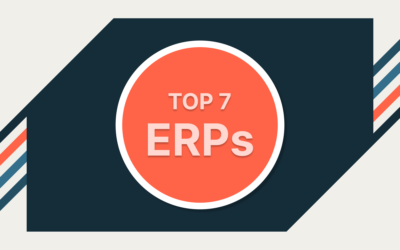Companies often avoid adopting new software solutions because they are concerned about the implementation process.
“How long does it take?”
“Will we lose all of our data?”
“It’s going to be painful for our staff to switch over.”
“We’re too busy, and we don’t have time for this.”
We get it! Onboarding is often viewed as a long, drawn-out process, and for some major implementations like a new ERP, it is. But what many people don’t realize is that implementing a spend management system like Airbase is actually quite, well…straightforward.
Here are the five simple steps to onboarding a spend management solution and achieving peak #spendlightenment!
1. Know what you want to get from Airbase.
Start by outlining how you want to use Airbase and what problems you need to solve — this step makes the entire implementation much easier.
Once we know your goals, we’ll create an onboarding plan that is unique to your company. For example, if your company plans to use Airbase only for its bill payment functionality, the onboarding will only involve the AP team. But, if you also want employees to be able to request virtual cards and reimbursements, the onboarding process will be larger in scope.
2. Identify the controls you want to put in place within your spend management solution.
Outline your ideal approval policies and internal controls. Consider who should have approval authority for each type of transaction, and note any other requirements. For example, you could have a policy that employees have to attach receipts to reimbursement requests.
3. Prepare your vendor data.
Your existing cards will be transferred to Airbase cards, so any cards currently used for recurring charges need to be identified so that new card details can be provided to the vendor. Plus, your vendor information will need to be set up in Airbase. Start collating your vendor data in advance of your onboarding, so existing vendors can be invited into your new spend management solution. We also recommend reviewing all vendor data in order to eliminate duplicates and identify old or incorrect information.
To get maximum ROI from Airbase, we recommend making payments by card whenever possible to earn cash back as you pay bills. To make this even easier, review your vendors and prepare a list of those who accept card payments. Once we have the list, we can bulk-create cards for you in one fell swoop.
4. Time to get in sync.
Once you’ve identified your goals, policies, and vendors, we start setting up your Airbase account, which involves:
- “KYC” (Know Your Customer). This is simply the mandatory process of identifying and verifying a client’s identity when opening an account, and then again periodically. In other words, as a spend management vendor we are obliged to verify that you are genuinely who you say you are.
- Setting up the bank connection. This entails setting up Airbase with information about the bank account that you will be using to fund the money into Airbase — for example, entering your ACH routing number and bank account number.
- The GL integration. This is easier than it might sound. If you’re a QuickBooks customer, Airbase has an integration which is as simple as two clicks of a button to sync your GL to Airbase. Once completed, Airbase will automatically fetch the chart of accounts, each department’s classes, locations, and everything else needed to create a smooth transition to the platform. If you’re not a QuickBooks customer, Airbase provides detailed steps to set up the integration, and on-call guidance is available when needed.
5. Customize your settings and controls.
Once you have synced your data, it’s time to customize your experience to ensure you’re getting the most out of the platform.
Most of our customers begin with the GL settings. This is where your prep work from steps 1–3 will come in handy and help you move through this process quickly.
Setting up the accounting and approval policies is a matter of configuring settings in Airbase to match your expense policies, and is based on the prep work done in the steps above that identified how you want the virtual card and reimbursement approvals to flow. These policies will be displayed within Airbase for easy reference.
Once you’ve completed your pre-onboarding data collection, synced your GL, customized the platform, it’s time to learn how everything works. Airbase is frequently praised for its intuitive interface that lets users get started on their own. Still, we also make it easy through optional onboarding training sessions, Help Center articles, videos, and, most importantly, testing everything before rolling it out to the end users.
Once you’ve completed these steps, you’ll be well on your way to making a significant shift in how your company manages finances. Once you go down the spent management route, you never come back!

Lynn Elwood
Head of Product Marketing at Airbase
 Jira Integration – Streamline Your Workflows
Jira Integration – Streamline Your Workflows  Ironclad Integration – Simplify Legal Operations
Ironclad Integration – Simplify Legal Operations  Asana
Asana 




